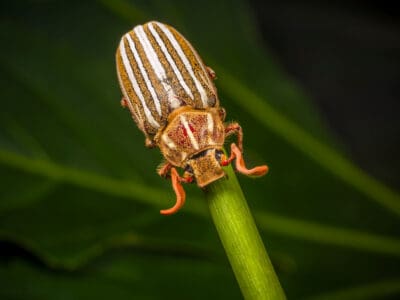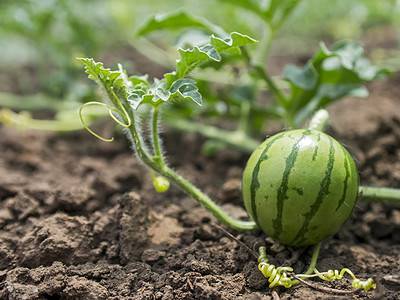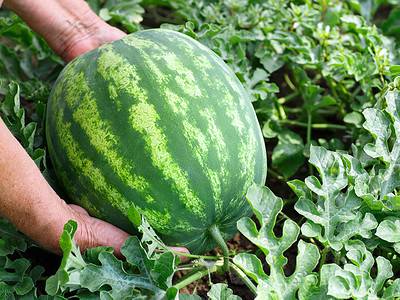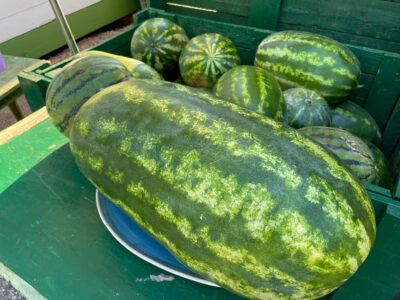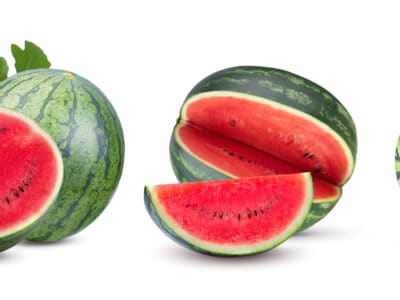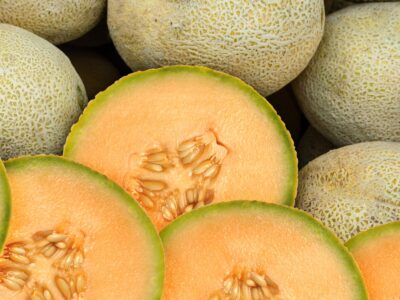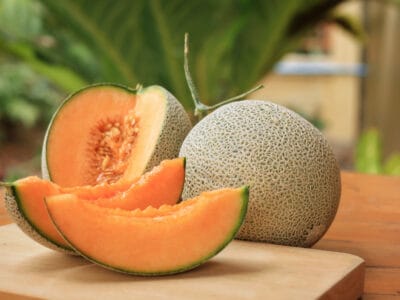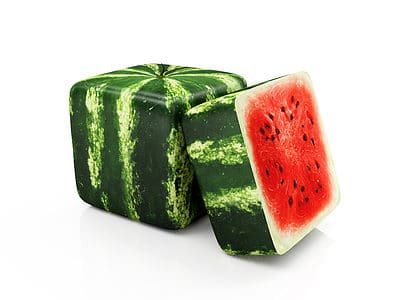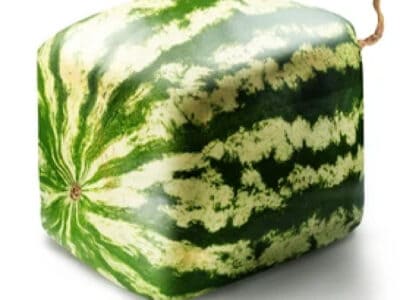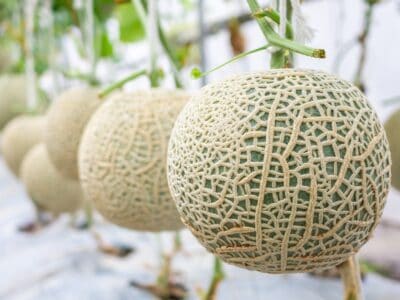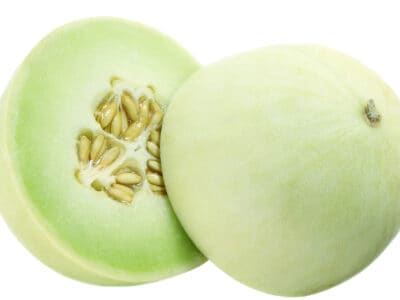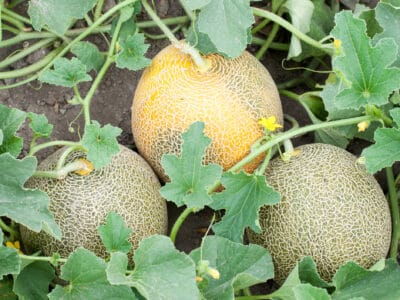Melon is a delicious and refreshing fruit. All melons belong to the gourd family Cucurbitaceae. Melons usually have a round or oblong shape and a hard rind that can range in color from green to yellow to brown. The flesh of a ripe melon is juicy and sweet, with a mild flavor. Melon is often eaten raw as a healthful snack and used in salads and desserts. More than 60 different species of melons are cultivated and consumed around the world.
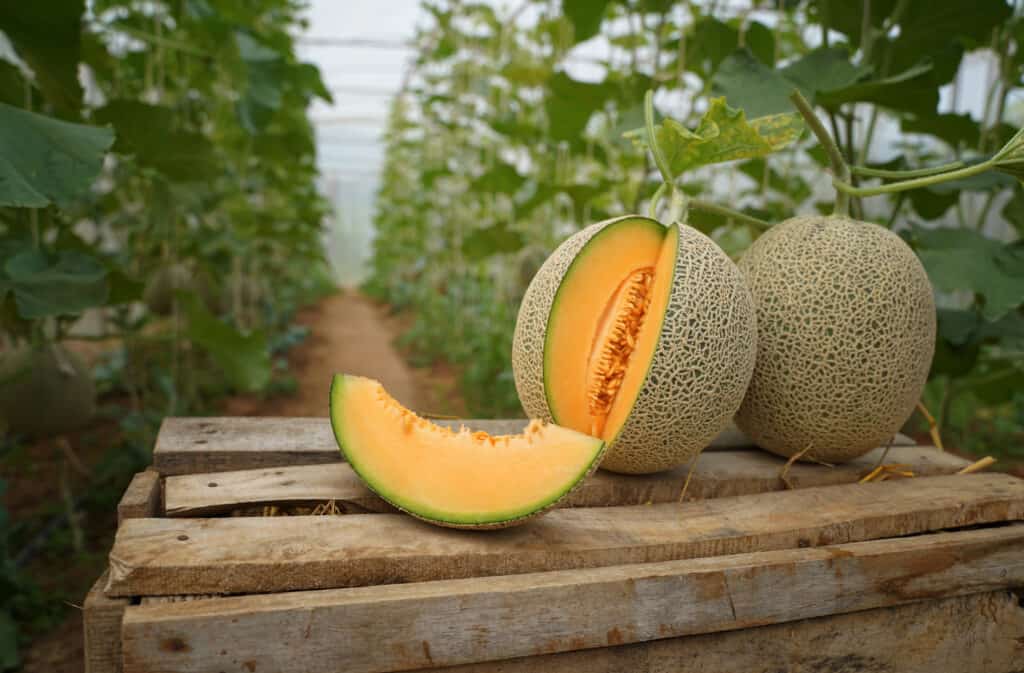
Melons usually have a round or oblong shape and a hard rind that can range in color from green to yellow to brown.
©Attasit saentep/Shutterstock.com
Melon: Key Characteristics
While each type of melon has its own unique characteristics, there are some key metrics that are shared across many varieties:
- Fruit: They are a type of fruit that develops from a flowering plant.
- They are, botanically speaking, classified as berries.
- Family: All melons belong to the Cucurbitaceae family, which includes other fruits and vegetables such as cucumbers, squash, and pumpkins.
- Vines: They grow on trailing vines along the ground or vines that climb up trellises or other supports.
- Leaves: Their leaves are large and have a distinct shape with serrated edges.
- Flowers: The plants produce large, yellow flowers that are either male or female.
- Fruit skin: They have a hard rind that can range in color from green to yellow to brown, depending on the variety.
- Fruit flesh: The flesh of ripe melons is typically juicy and sweet, with a mild flavor.
- Seeds: They contain numerous seeds that are embedded in the flesh.
- Growing conditions: Most are warm-season crops that require plenty of sunshine and warm temperatures to grow and mature properly. However, there are some varieties that do not fully ripen until autumn.
- Culinary uses: They are commonly eaten raw as a refreshing snack or used in salads, desserts, smoothies, and other dishes
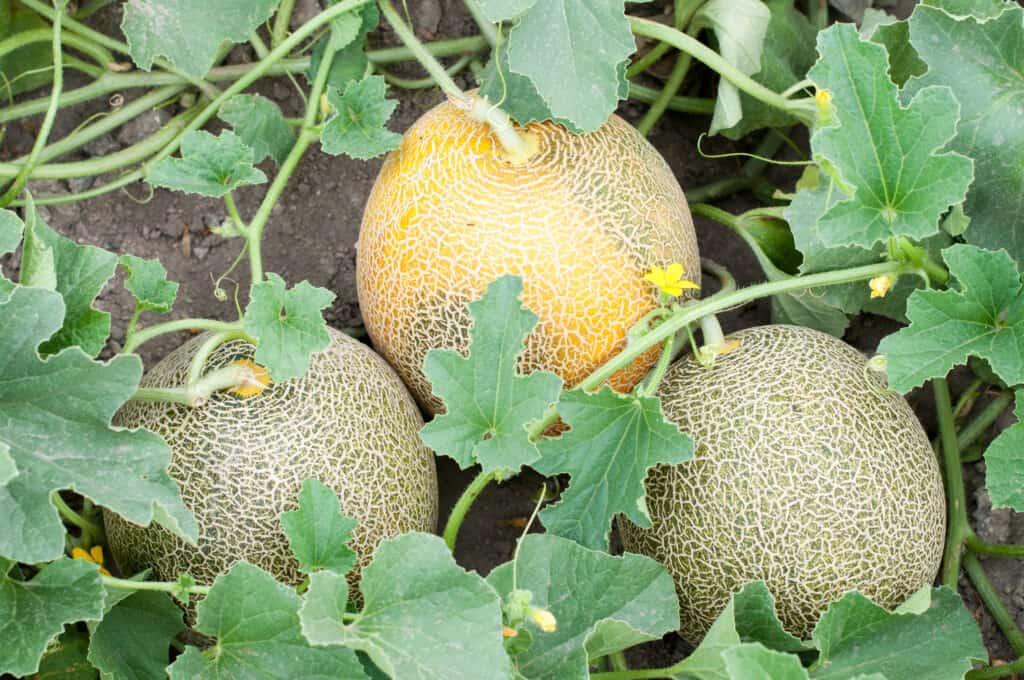
Melon leaves are large and have a distinct shape with serrated edges.
©iStock.com/tchara
Melon Taxonomy
All melons belong to the gourd family Cucurbitaceae and are contained within three genera: Benincasa, Citrullus, and Cucumis, with the lion’s share belonging to the genus Cucumis.
Benincasa
Benincasa hispida is the sole species in the genus Benincasa. A genus that contains only one species is referred to as a monotypic genus. The winter melon, also known as the ash gourd or the wax gourd is a culinary fruit commonly used in Asian cuisine. The immature fruit of the winter melon is sometimes used to make a traditional Asian drink called wax gourd tea or winter melon tea. The tea is often sweetened with sugar and sometimes flavored with herbs or spices.
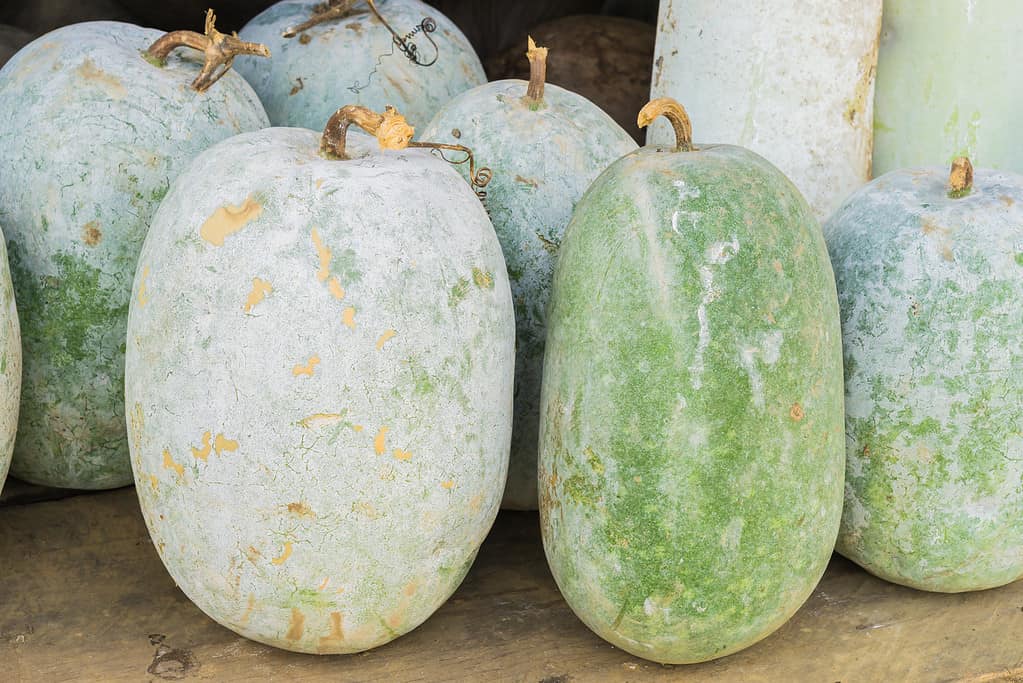
The winter melon, also known as the ash gourd or the wax gourd is a culinary fruit commonly used in Asian cuisine.
©Have a nice day Photo/Shutterstock.com
Citrullus
The genus Citrullus consists of seven recognized species of watermelon:
- Citrullus amarus- a wild species from Southern Africa. Citrullus amarus has spread to Europe
- Citrullus colocynthis – also known as bitter apple, bitter cucumber, or vine of Sodom. It is a wild species found in many parts of the world, including Africa, Asia, and the Mediterranean region. It is not commonly consumed as a food, but its fruit and seeds have been used in traditional medicine for a variety of purposes.
- Citrullus ecirrhosus – also known as Namib tsamma. It is a wild species found in parts of North Africa and the Middle East. It is not commonly cultivated or consumed as food.
- Citrullus lanatus – also known as watermelon. It is the most commonly cultivated species in the Citrullus genus and is grown for its edible fruit, which is consumed around the world.
- Citrullus mucosospermus – also known as the West African watermelon. It is a wild species found in Africa and is not commonly cultivated or consumed as food.
- Citrullus naudinianus (formerly Acanthosicyosalso naudinianus), is known as wild watermelon. It is a wild species found in Africa and is not commonly cultivated or consumed as food.
- Citrullus rehmii -It is a species native to Nambia in Africa.
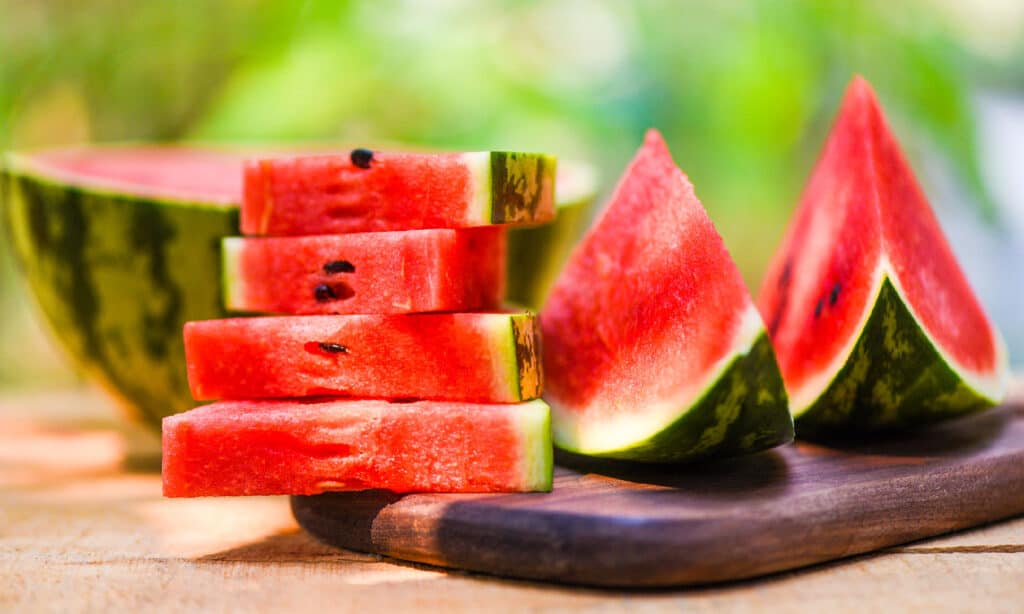
The genus
Citrullusconsists of seven recognized species of watermelon.
©iStock.com/panida wijitpanya
Cucumis
Cucumis is the largest genus of melons with 60+ separate species. The most notable species of Cucumis are:
- Cucumis melo: This species includes many different varieties, such as cantaloupe, honeydew, and casaba. Cantaloupe, also known as muskmelon, is a popular melon with sweet and juicy orange flesh. Honeydew melon has a pale green flesh and a mild, sweet flavor. Casaba melon has yellowish-green skin and sweet, juicy flesh.
- Cucumis metuliferus: This species is also called the African horned cucumber, horned melon, spiked melon, jelly melon, or kiwano. It has spiky orange or yellow skin and a green, jelly-like flesh with a tangy flavor.
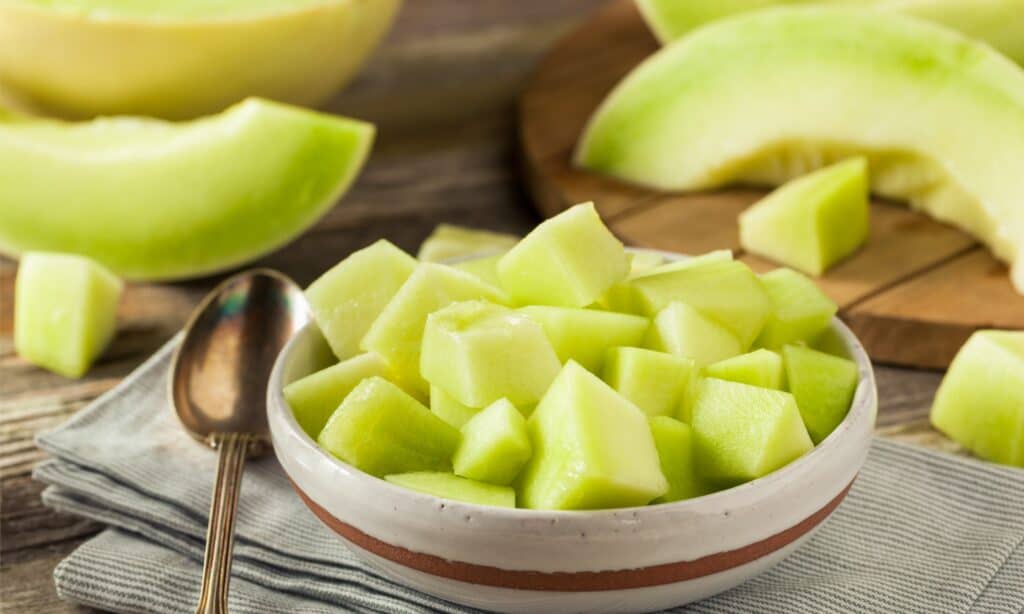
: This species includes many different varieties including honeydew.
©iStock.com/bhofack2
Melon: Origin
Benincasa, Citrullus, and Cucumis are believed to have originated in Africa and/or Asia. They were introduced to Europe by traders and explorers as early as 1120 BC. Melons were not introduced to North America until much later, during the colonial period when the colonizers brought them from Europe. The cultivation of melons in North America gradually spread. Today many varieties of melons are grown throughout the continent, commercially and in backyard gardens.

